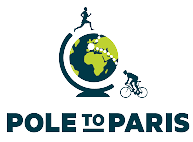Why is pilot-operated check valve used in clamping operation?
Why is pilot-operated check valve used in clamping operation?
In the case of swing clamps and pull-type cylinders, a dangerous pressure intensification can occur during unclamping, if the release pressure is not sufficient for opening. Therefore pilot-operated check valves must be used, that require a substantially lower opening pressure.
Where is the check valve most commonly used?
Check valves are used in many different applications. For example they are often placed on the outlet side of a pump, to protect the pump from backflow. Centrifugal pumps, the most common type of water pumps, are not self-priming, and therefore check valves are essential for keeping water in the pipes.
How does a pilot-operated check valve differ from a simple check valve?
Check valves have excellent sealage in the closed position, but a simple check valve cannot be used in the system in Figure 4.22 because flow is required in both directions. A pilot-operated check is similar to a basic check valve but can be held open permanently by application of an external pilot pressure signal.
What is pilot-operated sequence valve?
A sequence valve is a pressure-operated, normally closed, poppet or spool valve that opens at an adjustable set pressure. Some designs use a spring acting directly on the spool or poppet, others are pilot-operated. A sequence valve always has an external drain port to keep from trapping leakage oil.
How is reverse flow is possible in pilot operated check valve?
When backflow is desired, the pilot port is pressurized and the control element of the valve—often a ball or piston—is forced off its seat. The valve is then open to flow in both directions, with a reverse pressure drop (aimed from outlet to inlet) sufficing to drive the flow upstream.
Which valve is used to permit fluid to flow in one direction and block the flow in opposite directions?
The check valve is another type of flow control valve. The function of a check valve is to permit flow in only one direction.
Where is a single check valve used?
A single check valve can be used for fluid category 2 protection, where there may be an aesthetic change such as temperature, taste or odour. A double check valve is used for fluid category 3 protection, where there is a risk of substances of low toxicity such as common disinfectants.
What applications is the pressure sequence valve used for?
Sequence valves can be used to sense pressure (port 1) in one circuit and then open and supply oil to a secondary circuit (port 2) at a predetermined pressure. A typical application would be when maintained clamping pressure is required in the primary circuit while work is being performed in the secondary circuit.
What is the difference between a pilot operated relief valve and a pilot operated sequence valve?
What is the difference between a pilot-operated relief valve (balance) and a pilot-operated sequence valve? A pilot-operated relief valve relieves the system of excess pressure while the sequence valve controls when to divert flow to an actuator.
What is a pilot to open check valve?
Description. The Pilot-Operated Check Valve block represents a hydraulic pilot-operated check valve as a data-sheet-based model.
What pressure is needed to open a check valve?
The overall structure is simple and compact which makes its appearance beautiful.
What is a pilot check valve?
Prevent a load from dropping in case of hose or tube failure.
How does a pilot operated pressure regulator work?
How does a pilot operated pressure regulator work? Pressure regulators work according to one of two main functional principles: the directly actuated diaphragm regulator and the pilot actuated piston regulator. On these regulators, the main spring exerts a force on a diaphragm. This force can be adjusted by turning the regulator knob.
